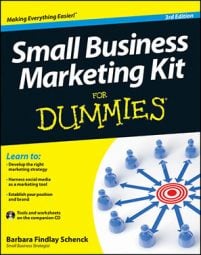To design the best print ad for your small business, the headline, copy, and graphics must work together to advance your small business brand. The best print ads capture attention, inspire the target market, promote the product’s benefits, prompt the desired consumer action, and advance the brand of the business that placed the ad.
Whether you create ads yourself with aid from someone experienced in the fields of copywriting, design, and ad production or you turn to pros who create ads for a living, there are several things you need to know.
Design every ad to advance your small business brand
Small businesses have small budgets. Don’t reduce your investment’s impact by changing the look of your ads from season to season or, worse, from week to week. Here are some ways to advance your brand:
Find an ad look and stick with it. Settle on a recognizable format that readers can link to your name and brand. A consistent ad design gains you marketplace awareness and impact and also saves you time and money by eliminating the need to redesign every new ad.
Prominently present your name. Huge advertisers can get away with postage stamp–sized presentations of their logos because their products and ad looks are so familiar. Small business budgets don’t allow for that level of awareness, so make your name apparent in every ad.
When in doubt, leave it out. This adage is good advice for do-it-yourself ad designers (and all other designers, too). As you consider tossing in an additional type font, different type size, ornamental border, or any other design element, remind yourself that good design is usually the result of subtraction — not addition.
Choose the right typeface for your small business ad
Choosing the right type is an art that makes a tremendous difference in how your ad looks and, more important, how easy your message is to read. As you work on ad designs, you may find the following terminology helpful.
A typeface is a particular design for a set of letters and characters. For example, Garamond is a typeface. Helvetica is a typeface. Times New Roman is a typeface.
A type family is the full range of weights and styles available in a typeface. For example, you can stay within the Helvetica family and select bold, italic, and light versions in a great number of sizes. Helvetica, Helvetica bold, and Helvetica italic are all part of the Helvetica type family.
A font is the term used for a full set of characters (letters, numbers, and symbols) in a particular typeface and size.
Limit the number of typefaces and sizes that you use in an ad, unless you’re intentionally trying to achieve a jam-packed or cluttered look (which may be the aim of a carnival promoter or a retailer announcing a giant warehouse clearance event). Additionally, follow this advice:
Headlines need to be attention-grabbing, so designers usually choose typefaces that are capable of standing out while also communicating clearly. Choose sans serif typefaces, which have no decorative lines at the ends of the straight strokes in the characters. Probably the most popular sans serif typeface is clean-cut Helvetica.
Body copy needs to be easy to read, so designers often opt for serif typefaces such as Garamond, Century Schoolbook, or Times New Roman because they have flourishes (serifs) that serve as connectors to lead the eye easily from one letter to the next.
Avoid any font that’s overly stylish or hard to read, avoid combining more than two type fonts in an ad, and definitely avoid using type in sizes too small for aging eyes.
The language of small business print ad production
Even if you pay the pros to produce your ads, it helps to know the language of print ad design and production:
Ad proof: This copy of your ad is the last thing you see before the presses run. When you review ad proofs, look closely at type set in all capital letters, which is where many typos slip through. Read your phone number twice and double-check your address.
See that mandatory information (copyright lines, trademarks, photo credits, and so on) is in place. Then hand the proof to the best proofreader in your organization for a second review before you initial your approval.
Display advertising: Print ads that combine a headline, copy, art elements, and the advertiser’s logo in a unique design are called display ads. All-word ads are called classified or directory ads.
Four-color: This is the term traditionally used to describe full-color printing, because (flash back to second-grade art class) you can create all colors from the primary colors of blue, red, and yellow (or, in printer terms, cyan, magenta, and yellow).
Before digital production, full-color printing involved separating a photo into these three colors and then reproducing it by laying one ink over the next until the image matches the original. Black (the fourth “color”) is used for type and other details
Spot color: Color used to highlight an otherwise black-and-white ad.

